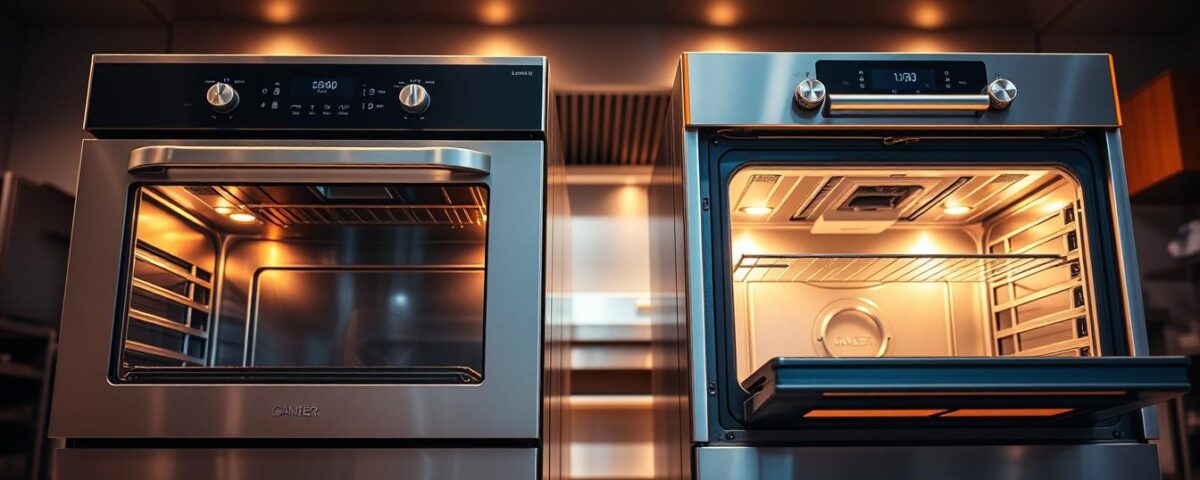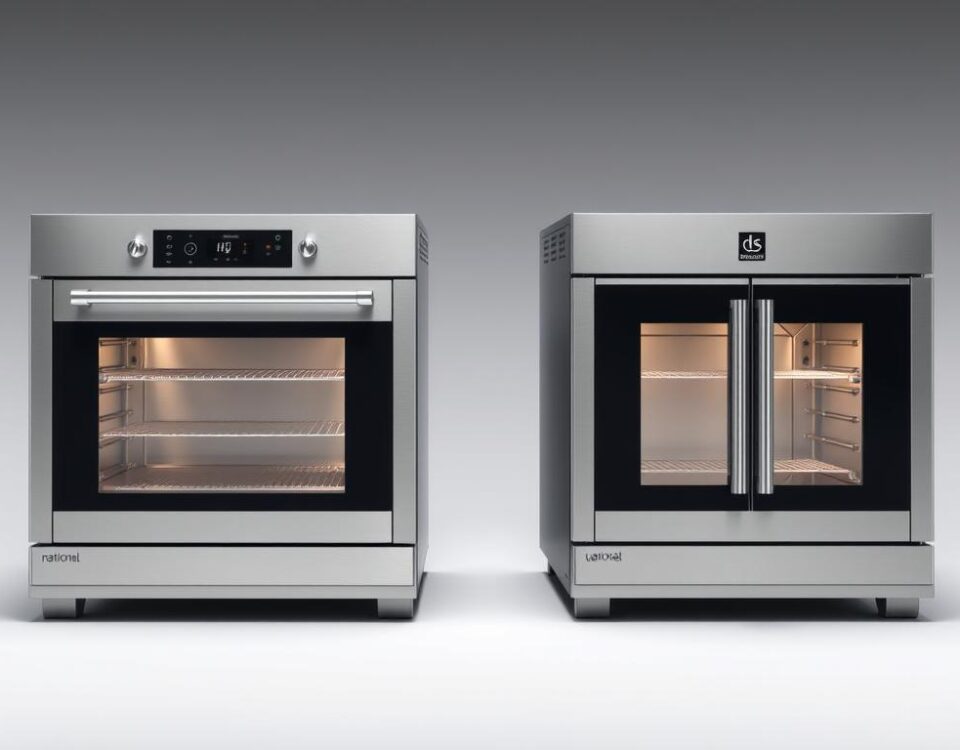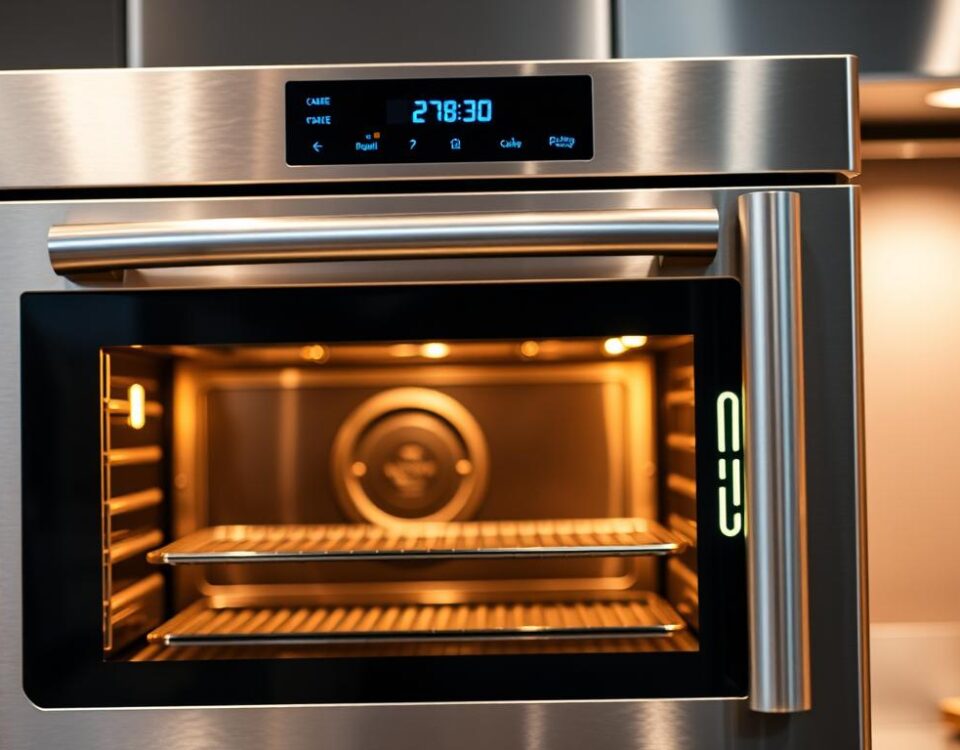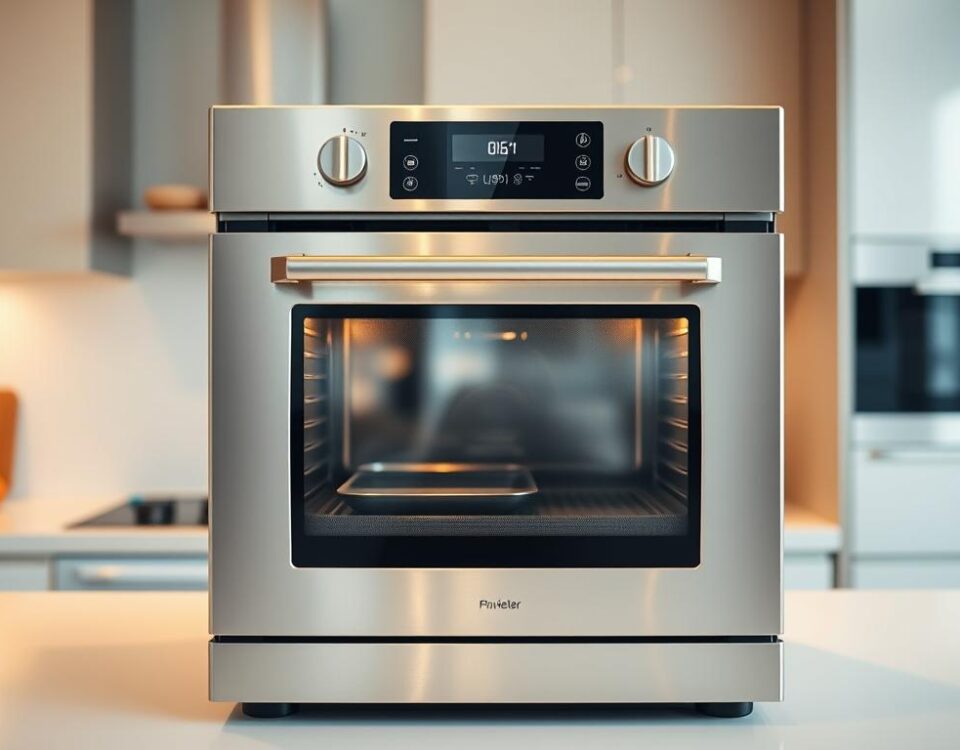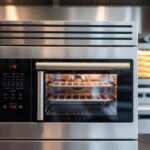
Quick Comparison Guide: Rational or Alto-Shaam for ROI?
September 25, 2025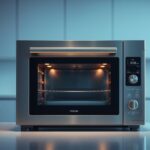
Best Tips to Reduce Combi Oven Costs with Rebates
September 26, 2025In the fast-paced environment of a commercial kitchen, maximizing food yield is crucial for profitability. I recall a busy restaurant where a switch to the right cooking technology significantly reduced food waste, boosting their bottom line. Did you know that the right oven can increase yield by retaining moisture and preserving the quality of food? With the global commercial oven market projected to grow significantly, the choice between a combi and convection oven is more critical than ever.
Both combi and convection ovens offer unique benefits, but their different cooking methods can significantly impact yield. As kitchen owners face the challenge of optimizing their cooking processes, understanding the differences between these ovens is key. What if choosing the right oven could be the difference between a profitable year and a financial strain?
Key Takeaways
- Understand how combi and convection ovens affect food yield.
- Learn the importance of moisture retention in cooking.
- Discover the impact of oven choice on kitchen profitability.
- Explore factors beyond yield, including cost and versatility.
- Get insights to make an informed decision for your kitchen.
Understanding Combi and Convection Ovens
Understanding the nuances of combi and convection ovens is key to determining which oven type best suits your culinary needs. Both are vital in commercial kitchens, but they differ significantly in their cooking technologies and applications.
What is a Convection Oven?
A convection oven cooks food using dry heat circulation, ensuring even cooking and browning. It’s ideal for baking, roasting, and cooking a variety of dishes without the need for additional moisture.
What is a Combi Oven?
A combi oven, on the other hand, combines steam and dry heat, offering versatility in cooking methods. It can replicate the functions of a convection oven, steamer, and even a sous-vide machine, making it a multifaceted tool in the kitchen.
Key Differences at a Glance
The primary difference lies in their cooking methods: convection ovens use dry heat, while combi ovens utilize both dry heat and steam. This difference significantly impacts the cooking process and the final quality of the food. Combi ovens offer more precise control over moisture and temperature, allowing for a customized cooking environment.
Combi vs Convection Oven Yield: The Critical Comparison
When it comes to maximizing yield in the kitchen, the choice between combi ovens and convection ovens is crucial. The way these ovens handle moisture significantly affects the final yield of your dishes.
How Moisture Affects Food Yield
Moisture is a critical factor in cooking yield. Combi ovens excel in maintaining moisture levels, which is vital for certain types of food. Vegetables, for instance, can lose a significant amount of their volume and weight during cooking due to moisture loss. Combi ovens help retain this moisture, ensuring a higher yield.
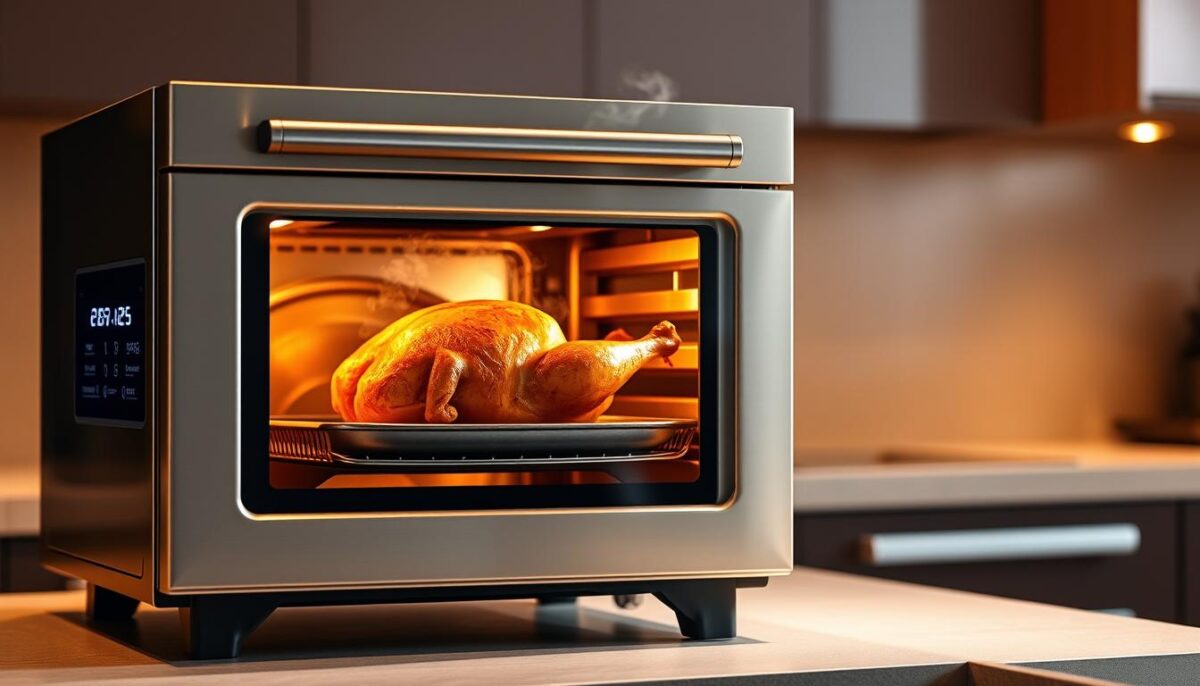
Yield Results in Meat Preparation
In meat preparation, the yield difference between combi and convection ovens can be substantial. Combi ovens, with their ability to balance convection and steam cooking, help retain the natural juices of the meat, leading to a higher yield. This is particularly beneficial in commercial kitchens where small differences in yield can translate to significant cost savings.
Yield Results in Baking and Vegetables
For baked goods and vegetables, combi ovens offer distinct advantages. The initial steam in combi ovens aids in better crust development for baked goods while maintaining interior moisture. Vegetables cooked in combi ovens retain their color, texture, and nutritional value due to shorter cooking times and moisture retention. This results in a higher quality product and improved yield.
| Oven Type | Meat Yield | Baked Goods Yield | Vegetable Yield |
|---|---|---|---|
| Combi Oven | Higher due to retained juices | Better crust development | Retains color and texture |
| Convection Oven | Lower due to dry heat | Less crust development | May lose color and texture |
Cooking Performance and Versatility
The cooking performance and versatility of combi ovens and convection ovens are critical factors in determining their value to a commercial kitchen.
Cooking Speed and Efficiency
Combi ovens excel in cooking speed and efficiency due to their ability to perform multiple cooking tasks simultaneously. This multifunctionality allows for streamlined kitchen operations, reducing the time and effort required to prepare complex dishes.
Temperature and Moisture Control
One of the key advantages of combi ovens is their precise temperature and moisture control. This feature enables chefs to achieve optimal cooking results, whether steaming vegetables or roasting meats, ensuring that dishes are cooked to perfection every time. The steam convection capability is particularly beneficial, allowing for a wide range of cooking techniques.
Menu Flexibility and Cooking Methods
Combi ovens support a wide range of cooking methods, including steaming, poaching, braising, roasting, baking, and combination cooking. This versatility enables kitchens to offer diverse menu items without needing additional equipment, making combi ovens an invaluable asset. The ability to cook multiple food types simultaneously in different ways improves kitchen efficiency during service.
- Combi ovens can roast, steam, sous vide, smoke, braise, bake, rethermalize, and oven fry foods, making them highly versatile.
- This versatility allows for more diverse menu offerings and can improve kitchen efficiency.
Cost Analysis: Investment vs. Returns
A comprehensive cost analysis is essential to determine whether a combi oven or convection oven is the better investment for your kitchen. This involves evaluating both the initial purchase price and the long-term operational costs.
Initial Purchase Considerations
The initial cost of a combi oven is typically higher than that of a convection oven. However, the additional features and capabilities of combi ovens can provide significant benefits in terms of cooking versatility and food quality.
Long-Term Operational Costs
Combi ovens often offer energy efficiency and labor savings that can offset their higher initial cost over time. By reducing food waste and improving yield, combi ovens can lead to lower operational costs in kitchen operations.
| Oven Type | Initial Cost | Operational Cost | Yield Improvement |
|---|---|---|---|
| Combi Oven | Higher | Lower | Significant |
| Convection Oven | Lower | Higher | Moderate |
Return on Investment Through Yield Improvement
By improving food yield and reducing waste, combi ovens can provide a strong return on investment. For high-volume operations, the yield improvements can significantly reduce food costs, making combi ovens a sound long-term investment.
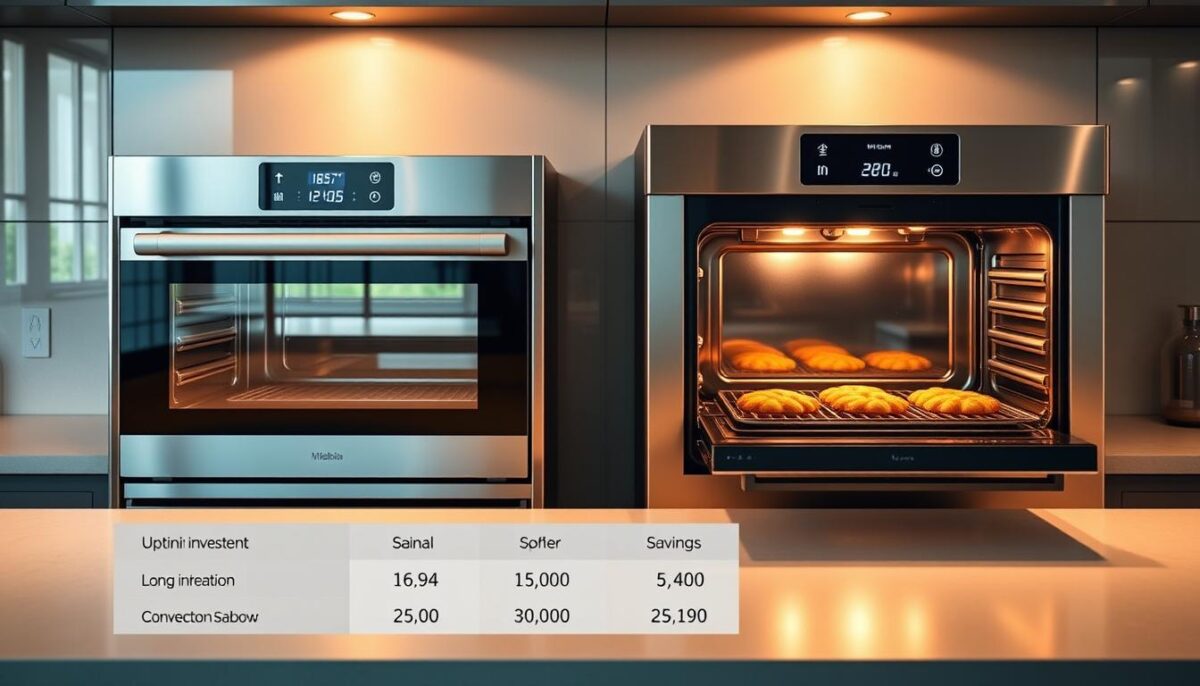
Space and Kitchen Integration
Assessing your kitchen’s space and layout is essential for choosing the right cooking technology. The size and configuration of your kitchen can significantly impact the functionality and efficiency of your cooking operations.
Footprint and Size Options
Combi ovens and convection ovens come in various sizes, but combi ovens often offer more flexibility in terms of capacity. This means you can achieve more with a smaller footprint, a crucial factor for kitchens where space is limited.
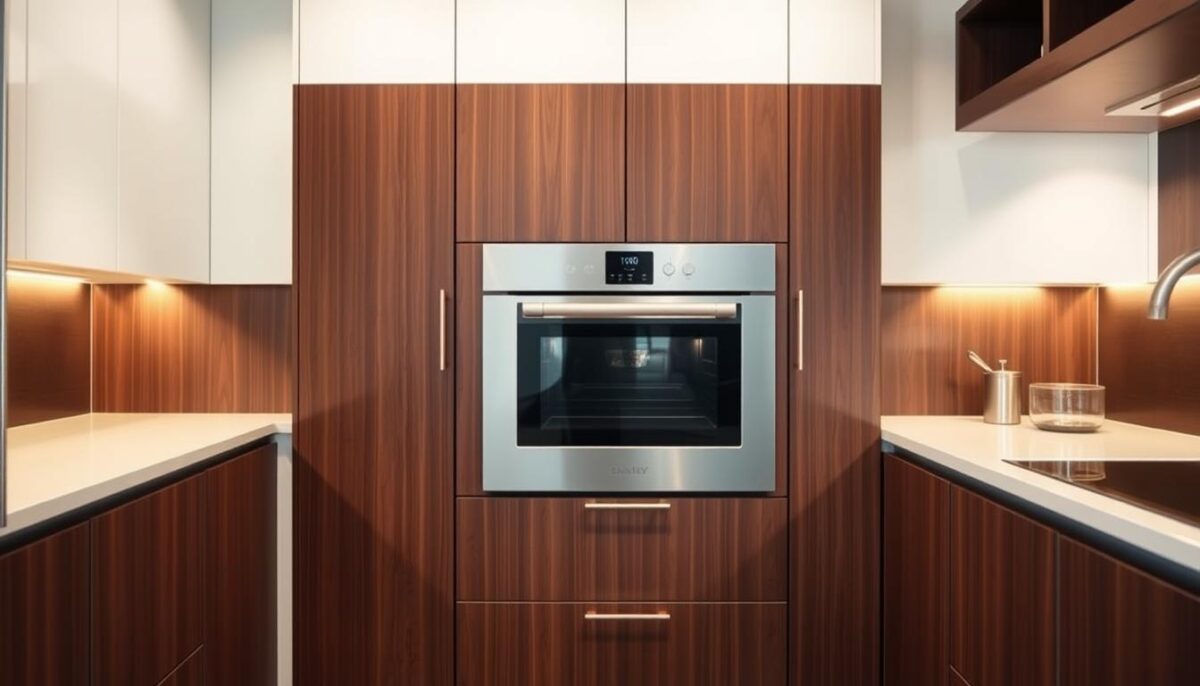
Replacing Multiple Pieces of Equipment
One of the significant advantages of a combi oven is its ability to replace multiple pieces of equipment in your kitchen, thereby saving valuable space. By consolidating functions, you can streamline your kitchen’s workflow.
Installation Requirements
Installation requirements for combi ovens can be more complex, involving water supply lines, drainage, and sometimes water filtration systems. In contrast, convection ovens generally have simpler installation needs. Understanding these requirements is crucial for planning your kitchen’s layout and ensuring compliance with local regulations.
| Oven Type | Installation Complexity | Space Requirements |
|---|---|---|
| Combi Oven | High | Compact, but requires additional utility connections |
| Convection Oven | Low to Moderate | Varies by size |
By carefully evaluating your kitchen’s space and equipment needs, you can make an informed decision that enhances your kitchen’s efficiency and productivity, leveraging the right technology for your operations.
Practical Considerations for Commercial Kitchens
When deciding between a combi oven and a convection oven, commercial kitchens must consider several practical factors that impact their daily operations. For restaurants and other high-volume establishments, the choice between these two types of ovens can significantly affect their bottom line.
Staff Training and Ease of Use
Staff training is a crucial aspect to consider when introducing new equipment into a commercial kitchen. A combi oven offers multifunctionality, allowing staff to perform various cooking tasks with ease. However, this versatility requires comprehensive training to ensure that staff can fully leverage its capabilities. In contrast, a convection oven is often more straightforward to operate, but its limited functionality might not justify the training investment for some kitchens.
Maintenance Requirements
Regular maintenance is essential for both combi and convection ovens to ensure they continue to operate efficiently. Combi ovens, with their complex mechanisms, may require more frequent maintenance checks compared to convection ovens. However, many modern combi ovens are designed with ease of cleaning in mind, which can mitigate some of the maintenance challenges.
Which Oven Type Suits Your Operation?
To determine which oven type best suits your commercial kitchen, consider your specific needs and benefits of using a combi oven. High-volume operations with diverse menus often benefit from the flexibility of a combi oven, particularly when serving proteins where yield improvement directly impacts profitability. On the other hand, kitchens with specialized needs, such as bakeries focused on bread and pastry, might prefer dedicated convection ovens optimized for their specific applications.
Ultimately, the decision should be based on a thorough analysis of your operation’s specific needs, including menu, volume, space, budget, and staff capabilities. By weighing these factors, you can make an informed decision that enhances your kitchen’s efficiency and productivity.
Conclusion
The comparison between combi ovens and convection ovens reveals that while both have their merits, combi ovens generally offer superior yield results, particularly for protein items, due to their advanced steam convection technology.
When deciding between these two options, it’s essential to weigh the higher initial investment for combi ovens against their potential for long-term returns through improved yield, energy efficiency, and space savings in your kitchen.
Consider your operation’s specific needs, constraints, and priorities. For many commercial kitchens, especially those serving higher volumes or working with valuable proteins, the yield improvements from using a combi oven can justify their higher cost. As technology continues to evolve in both oven categories, consult with equipment specialists to make an informed decision that aligns with your menu requirements, space constraints, budget limitations, and staff capabilities.
FAQ
What are the primary benefits of using a combi oven in a commercial kitchen?
A combi oven offers multiple cooking methods, including steam and dry heat, allowing for greater versatility and the ability to cook a variety of dishes simultaneously, thus saving space and potentially increasing yield.
How does a convection oven differ from a combi oven in terms of cooking functionality?
Unlike a combi oven, a convection oven uses dry heat and circulating air to cook food, which is ideal for certain types of cooking like roasting and baking, but may not offer the same level of moisture control as a combi oven.
Can a combi oven really help in improving food yield?
Yes, by allowing for precise control over temperature and moisture, a combi oven can help in cooking food more gently, thus potentially reducing shrinkage and improving yield, especially for delicate or high-value ingredients.
What considerations should be taken into account when deciding between a combi and a convection oven for my kitchen?
Factors such as the type of cuisine, available kitchen space, staff training, and the need for moisture control should be considered when choosing between a combi and a convection oven.
How does the cooking speed of a combi oven compare to a convection oven?
Combi ovens can often cook food faster than convection ovens due to their ability to use steam, which can accelerate cooking times and help retain moisture in the food.
Are there any specific maintenance requirements for combi ovens that I should be aware of?
Combi ovens require regular cleaning and descaling to prevent the buildup of mineral deposits from the water used in steam generation, ensuring optimal performance and longevity.
Can a combi oven replace multiple pieces of equipment in my kitchen?
Yes, one of the key benefits of a combi oven is its versatility, allowing it to potentially replace several other appliances, such as a steamer, oven, and sometimes even a proofing cabinet, thereby saving valuable kitchen space.
